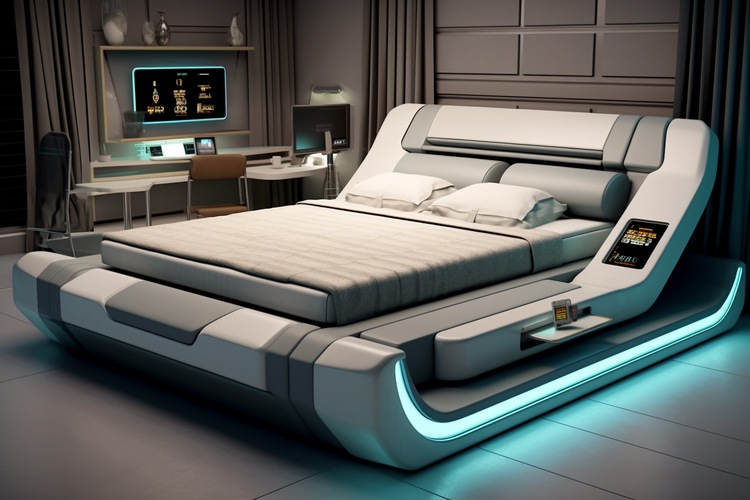Passive sensor setups for subtle environmental adjustments
Passive sensor setups help bedrooms respond quietly to changes in temperature, humidity, light, and sound without active user input. This article outlines practical configurations that support sleep quality, material longevity, and allergen control while keeping interventions minimal and unobtrusive.

Passive sensor networks can transform a bedroom into a quietly responsive space that adjusts conditions for comfort and wellbeing. Using low-power, unobtrusive sensors and simple automation rules, these setups monitor parameters such as temperature, humidity, light levels, and noise without requiring constant interaction. The goal is subtle adjustments that support sleep and protect materials like textiles and mattresses, while limiting disturbances from ventilation or lighting changes. Well-designed passive systems emphasize reliable sensors, sensible placement, and coordination with insulation, layout, and plants to maintain a balanced environment.
How can sensors support sleep and mattress comfort?
A focus on sleep means monitoring temperature, humidity, and movement patterns rather than recording detailed personal data. Passive thermal and humidity sensors near the mattress can indicate when conditions move outside preferred ranges, prompting gentle adjustments via ventilation or micro-heating elements in a mattress topper. Occupancy sensors that detect presence without capturing identity enable timed lighting and ventilation responses to reduce sleep disruptions. Careful integration avoids frequent activations: thresholds and delays prevent sensors from triggering changes with every small variation, preserving consistent temperature and comfort for better sleep.
How should sensors interact with lighting and fabrics?
Light sensors paired with circadian-friendly lighting systems can dim or shift color temperature gradually as natural evening light declines. Passive ambient light and motion sensors positioned thoughtfully near windows and bedside areas reduce unnecessary activations and protect sensitive fabrics and materials from prolonged exposure to bright light. For fabrics and upholstery, sensors that track light exposure and humidity help prevent fading and mildew by coordinating blinds, ventilation, and soft lighting. Prioritize sensors with neutral appearance and non-intrusive mounts to maintain a restful bedroom aesthetic.
Can sensors improve ventilation, allergens, and materials?
Humidity and particulate sensors provide data to guide passive ventilation strategies that reduce allergens and protect materials. Elevated humidity readings can cue gradual ventilation bursts or dehumidification to prevent mold formation on textiles and mattresses; particulate sensors alert to increased dust or pollen, prompting filtration or brief increased air exchange. Sensor-driven strategies aim to minimize mechanical noise and drafts—using short, infrequent ventilation pulses or low-fan speeds—so that air quality improves without compromising sleep or decor. Placement matters: keep intake points clear of plants or clutter to ensure accurate readings.
How do sensors adapt textiles, storage, and organization?
Closet and storage areas benefit from humidity and temperature monitoring to protect stored fabrics and materials. Passive sensors inside wardrobes or storage boxes can signal when conditions risk fabric degradation, encouraging airing cycles or desiccant use. For organization, simple motion and occupancy sensors can inform lighting and localized ventilation in storage zones without active user input. These systems help preserve sensitive items such as seasonal bedding and maintain tidy conditions by aligning environmental control with actual usage patterns rather than fixed schedules.
How can sensors manage acoustics, layout, and insulation?
Sound-level sensors can detect persistent noise issues and trigger soft mitigation strategies like closing heavy curtains, adjusting white-noise levels, or signaling mechanical systems to reduce fan speeds. Sensors that monitor temperature gradients around the room inform where insulation or draft-proofing would be most effective; paired with layout adjustments—like moving a mattress away from an exterior wall—these insights improve thermal comfort. Passive setups emphasize data that prompts long-term fixes (insulation, layout, material choices) rather than constant active adjustments, reducing sensor-driven interruptions.
What types of sensors and plants complement these setups?
Common passive sensors include thermistors, humidity sensors, ambient light detectors, particulate sensors, and low-power acoustic sensors. Choose well-calibrated components with low electromagnetic and acoustic footprint. Integrating houseplants can support humidity regulation and air quality but should not replace mechanical filtration where allergens are a concern; sensors help determine the actual impact of plants on indoor conditions. Prioritize sensors with local-data processing or simple threshold rules to avoid unnecessary cloud dependency and preserve privacy while ensuring subtle, effective environmental adjustments.
In summary, passive sensor setups for bedrooms aim to maintain steady, healthy conditions with minimal user intervention. By combining temperature, humidity, light, particulate, and sound monitoring with thoughtful placement and conservative automation thresholds, these systems support sleep, protect mattresses and textiles, reduce allergen exposure, and guide long-term improvements to layout, insulation, and storage. The emphasis is on subtlety: small, timely adjustments that preserve a tranquil atmosphere and the longevity of materials without intrusive technology.





